There’s a host of conflicting information out there about what our bodies need, and the diets that are best for us and the planet – and much of the data has a slant to it. Are sources pushing a certain agenda? For example, from the 1990s to the 2000s, the US government increased the “required” daily serving of dairy in its US Department of Agriculture dietary requirements food pyramid because it was being paid by and lobbied by the dairy industry to push its agenda and sell more milk, even though 1 in 4 Americans couldn’t digest milk. And it goes beyond milk, this Time magazine article talks about how agricultural industries lobbying the US government have skewed the US dietary guidelines, meaning that the science was ignored in favour of pushing the agenda on what these big-business industries wanted Americans to be eating. Thankfully, in the UK and throughout Europe, the food-safety laws are more strict. But the UK hasn’t been completely immune to scientific food-related whims: remember when we were told not to eat more than three eggs per week and let’s not forget the low-fat phenomenon – where eating less fat actually made us fatter?
So, what should we be eating (at least based on the most recent scientific advice), should we be taking supplements, and what’s the deal with what we eat?
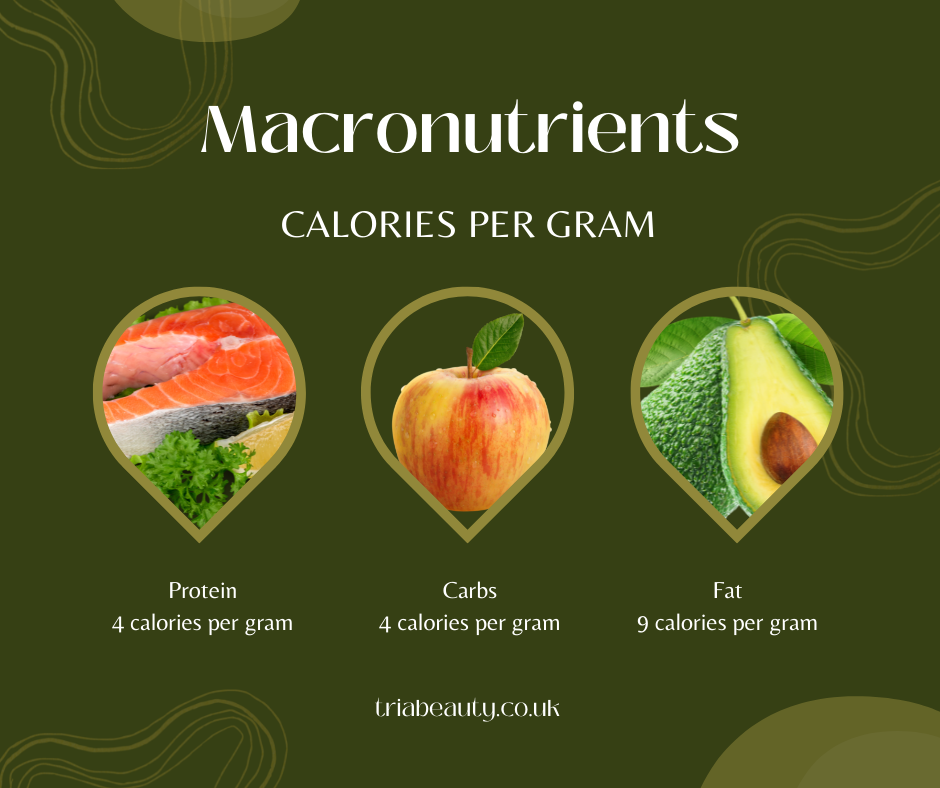
Micro- versus macronutrients
In simple terms, micronutrients and macronutrients are what food is made up of, and we need micronutrients in small amounts and macronutrients in larger amounts.
The three macronutrients are fats, proteins, and carbohydrates. Of course, you’ll have heard of all three of these.
These macronutrients are also how we get caloric values in foods. Each gram of carbohydrate and each gram of protein yields 4 calories/gram. Each gram of fat yields 9 calories/gram. Calories are simply the amount of energy released when your body digests and absorbs the food. The total caloric value will vary as foods often contain these macros in various proportions.
For example, take a 250-gram serving of tofu. You multiply the grams of macronutrients by the number of calories per gram that each macronutrient provides.
- 12g fat (12×9 = 108 calories)
- 4.8g carbohydrate (4.8×4 = 19.2 calories)
- 20g protein (20×4 = 80 calories)
Add all these values and these micronutrients add up to roughly 207 calories for the serving size. Plus, you’ll also get 302.5mg of potassium (8% of your recommended daily intake), 87% calcium, 75% iron, and 18% magnesium. Of course, the simple way to calculate calories is to look at the food label!
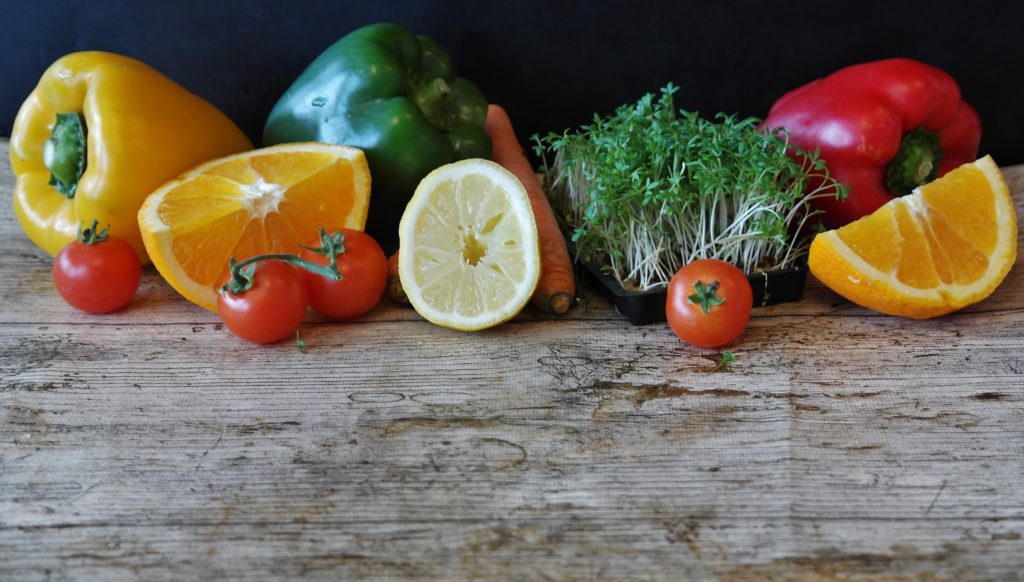
Micronutrients are those things you have probably also heard of called vitamins and minerals and our bodies need these in smaller amounts. You’ll generally eat your micronutrients whilst eating foods that contain the three macronutrients – most foods are not all one thing or the other but are made up of various proportions of micro- and macronutrients.
Protein-containing foods like beans, tofu, meat, milk, fish, eggs, etc are also sources of micronutrients like iron, calcium, and vitamin D, as one example.
Foods that contain carbohydrates like fruits and veggies provide a wide range of micronutrients in the form of vitamins, minerals, and fibre. Starchy carbs such as brown rice, multigrain bread, and cereals also provide fibre, B vitamins, and magnesium.
Foods that contain fats often provide us with micronutrients such as vitamins, A, D, E, and K.
As you can see, the micro- and macronutrients work together to provide calories for energy and micronutrients for basic functions like immune health, blood clotting, bone health, growth, repair, fluid balance, energy production, and so on.
For the recommended daily allowance of each micronutrient, take a look at this Healthline article and there’s plenty of information on The British Nutrition Foundation’s website.
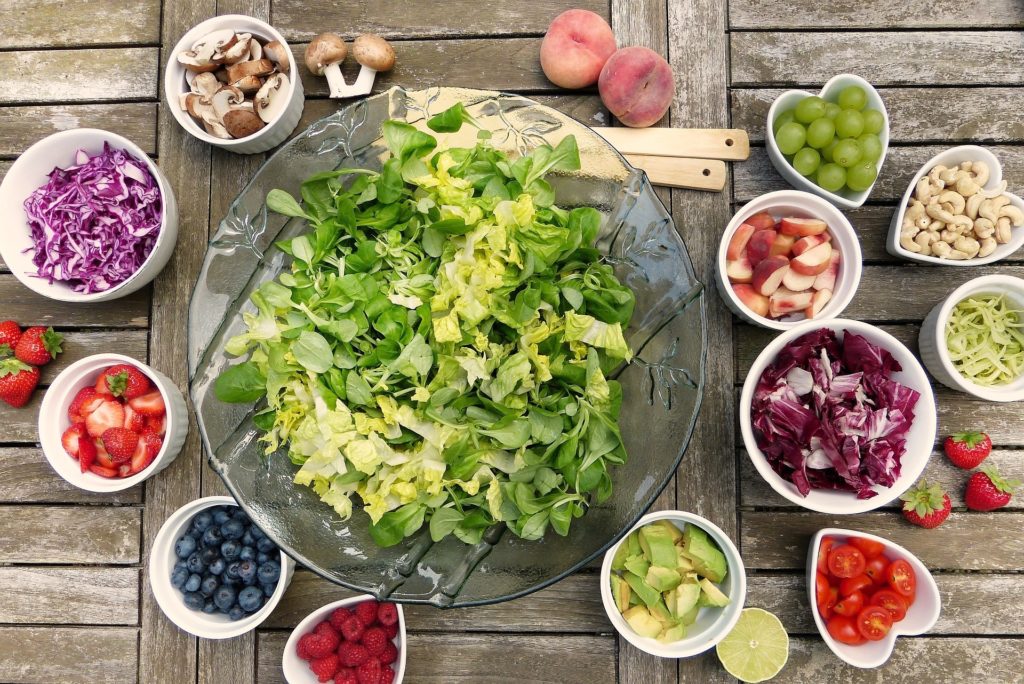
When would I need a micronutrient or vitamin/mineral supplement?
Although at Tria Beauty UK, we ensure our recipes and recommendations are vegan to ensure that they fit everyone’s dietary restrictions, those who eat vegan, vegetarian, and plant-based diets, may miss out on some micronutrients, which means you may need to use nutritional supplements in your diet.
Well-planned vegetarian and vegan diets support excellent health and can also meet your daily dietary needs but some other nutrients that are vital for our bodies will need more consideration when you’re eliminating animal-derived products from your lifestyle.
The following vitamins are more difficult to get when eating a vegan or vegetarian diet.
- Vitamin B12: This vitamin naturally occurs in animal products like meat, fish, eggs, and milk. Vegans can eat foods fortified with B12 (such as fortified cereals) but may also wish to take an additional B12 supplement.
- Iron: Many plant-based sources of iron, including beans, lentils, nuts and green vegetables, provide “non-haem” iron, which is less bioavailable than “haem” iron provided by meat. When eating iron or taking iron supplements, it’s advisable to consume a source of vitamin C such as a glass of orange juice, a whole citrus fruit, or peppers to increase the absorption of non-haem iron.
- Calcium: Vegans can opt for fortified dairy alternatives, dried fruit, green leafy veg (like kale and watercress), bread, and calcium-set tofu.
- Iodine: Dairy and dairy products provide most of the UK’s daily iodine needs, but for vegans, iodine can be found in plant foods like whole grains (with amounts varying depending on the levels in the soil where plants were grown), plant-based milk alternatives (like oat and soya) with fortification, or by taking a supplement.
- Vitamin D: Plant-based vitamin D sources include fortified foods like vegetable spreads, breakfast cereals, plant-based dairy alternatives (check the labels for added vitamin D), UV-irradiated mushrooms, or supplements. Often vitamin D supplements contain vitamin D3 which is derived from lanolin, a wax extracted from sheep’s wool, and therefore may not be suitable for vegans so check your labels to ensure your vitamin D3 supplement is made from lichen instead.
- The Vegan Society recommends VEG 1 supplements for all-around nutritional support at an affordable price point.
Again, although plant-based diets are healthy, it’s important to ensure you’re meeting your daily micronutrient needs, which requires careful planning. But the same goes for those who eat animal-based diets. Just because you’re eating sources of micronutrients doesn’t always mean you’ll hit the targets. Supplements may be the best way to ensure you’re meeting your body’s micronutrient needs. Ask advice from your GP or another health professional before taking supplements.

Are all macronutrients created equal? Here’s a quick rundown!
The answer is, of course, no, all macronutrients aren’t the same. Eating processed packaged food isn’t always as nutrient-dense as eating whole foods and so forth. You’re getting calories from each which will provide energy but consistent energy levels come from more nutrient-dense options.

Carbohydrates
Carbohydrates come in complex and simple forms (polysaccharides/oligosaccharides versus monosaccharides/disaccharides) and without getting too scientific, the complex carbs break down slower in our bodies than simple carbs. All carbs are made of strings of sugar units, but simple carbs will get absorbed faster (one to two sugar units) and complex carbs (long strings of sugar units) get absorbed slower. The slower the digestion, the more steady impact on blood glucose levels. Ever hear of sugar spikes? Well, sometimes simple carbs like sugary sweets or juice can cause your blood sugar to spike, energy to rise quickly, and then drop shortly after.
That doesn’t mean that you can never eat simple carbs, but if you fuel your body with combinations of macronutrients, you’ll have a lower chance of creating drastic sugar spikes which can sometimes make us feel unwell.
Complex carbs (particularly fibre) help fuel the body, maintaining digestive function and cholesterol levels. Complex carbs include grains-based foods like bread, cereal, and pasta, and whole carbs like potatoes, starchy vegetables, peas, beans, legumes, and rice. Then you have fruits, vegetables, and dairy products that also contain carbs. Simple carbs include things like table sugar, honey, maple syrup, other syrups, sweets, fruit juice, sweetened beverages, soda, and milk.
If you combine both simple and complex carbs with a source of fat and protein, your sugar is less likely to spike. But keep in mind that sugar combined with fat lights up our primitive brain like no other combo which can lead to overeating. Our bodies are just like “yes, calories!” and we can often ignore the signals to stop consumption – hence why you won’t often overeat a head of broccoli but you can polish off a plate of cookies.
Everyone touts that we should get more protein but chances are your intake will be sufficient. The daily recommended amount is 0.75 grams of protein per kilo of body weight per day so that means about 56 grams per day for men (with an average body weight of 75 kgs or 11 stone 11 lbs) and 45 grams per day for women (with an average body weight of 60 kgs or 9 stone 6 lbs).
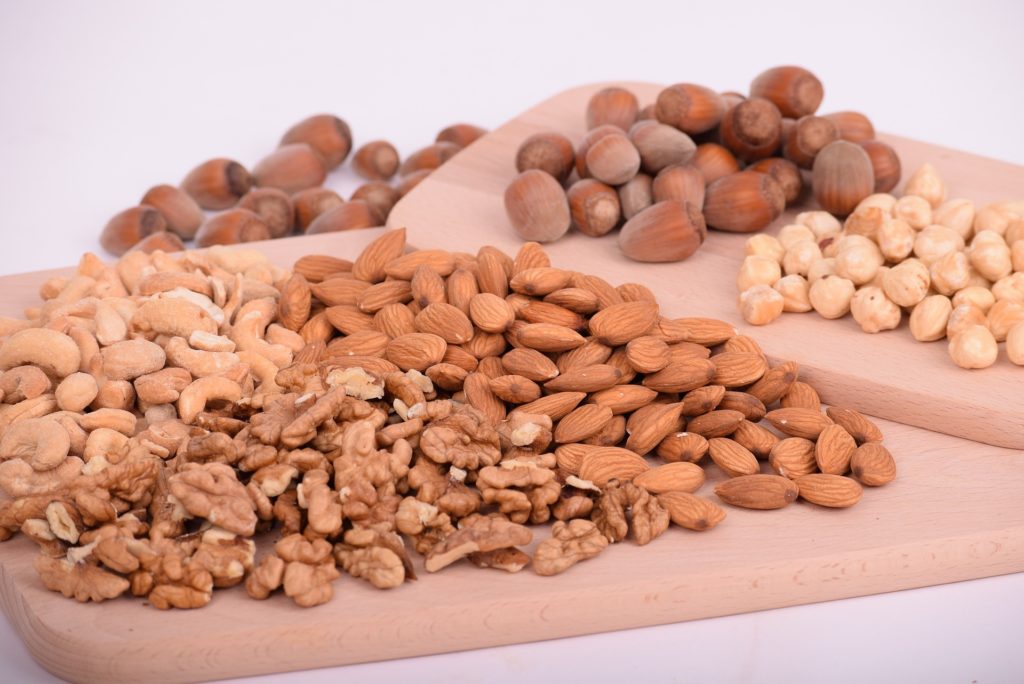
Protein
Protein gives the body vital amino acids, which are the building blocks of muscles and other body structures like the brain, nervous system, blood, skin, and hair. Protein transports oxygen and other nutrients around the body. If you didn’t eat any carbs, the body can reverse-process protein (via gluconeogenesis) and convert protein into carbs to fuel the body – hence why those who suffer from anorexia nervosa have bodies that eat their own muscle and heart tissue because their body is using the person’s own amino acids to fuel itself and essential brain and organ function.
Our bodies can make 11 amino acids on its own but there are 9 amino acids that it cannot make, which are the “essential amino acids” and you get these through your diet. There are two types of proteins: complete proteins and incomplete proteins.
Complete proteins have all of the amino acids that our bodies need in the appropriate amounts. The most common sources of complete protein are animal-based products like meat, poultry, seafood, eggs, and milk. But there are some vegetarian and vegan-approved complete sources of protein such as quinoa and edamame.
Incomplete proteins provide some but not all of the amino acids needed by the body. Most plant-based proteins are classed as incomplete proteins but when they are consumed with complementary proteins, you create complete proteins. These food combos include combining grains with legumes (bean soup and crackers; black beans and rice; pasta and peas; whole wheat bread and peanut butter) or nuts/seeds with legumes (hummus; lentils and almonds; roasted nuts, seeds, and peanuts).
Complete proteins include poultry, eggs, beef, pork, salmon, soy, and quinoa. Incomplete proteins include lentils, nuts, beans, whole grains, and vegetables. You don’t have to combine incomplete proteins in the same meal for the body to use them or to create complete proteins. For example, you can eat a spoonful of peanut butter at one point in the day and then later eat a piece of whole-grain toast with avocado. The peanut butter plus the whole grain bread will create a complete protein, but they don’t have to be eaten together – although they can be!

Fats
Fats play an important role in the body. Even though fats have been incorrectly vilified and people try to avoid them, fats provide an important source of energy and are vital for necessary insulation, cell function, and protecting vital organs. As mentioned, fats contain more than double the calories of other macronutrients (at 9 calories per gram versus 4 calories per gram). There are two types of fats: saturated and unsaturated.
Saturated fats come from meat and dairy sources. These fats are solid at room temperature and are shelf-stable. These fats include butter, lard, fatty meats, cheese, and full-fat dairy products.
Unsaturated fats include monounsaturated and polyunsaturated fats. Unsaturated fats are derived from plant sources and fortified foods like eggs, dairy, fish, seaweed, and grass-fed animal products. These fats are often liquid even when refrigerated and have a shorter shelf life. Unsaturated fats include nuts, seeds, plant-based oils like olive oil, fatty seafood (e.g. salmon, tuna, mackerel, trout, etc), and avocados.
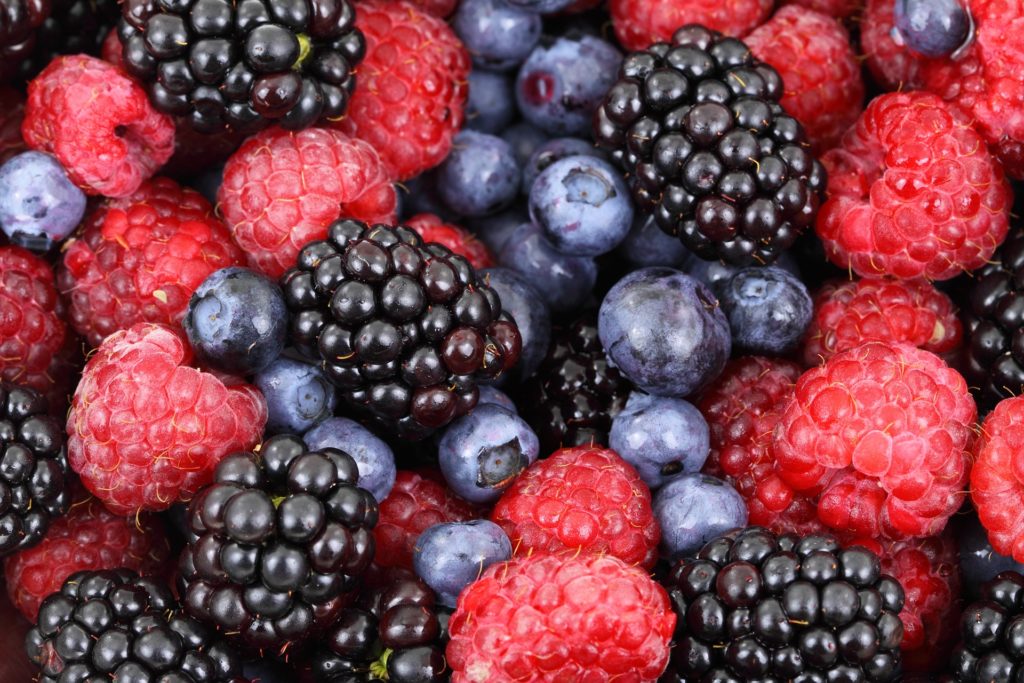
How much do I need to eat?
Your specific macro, caloric, and micronutrient needs will be determined by your individual body, activity level, and goals.
You’ll want to calculate your basal metabolic rate (BMR) and your total daily energy expenditure (TDEE). If you want to stay at the same weight, you’ll want to eat only the number of calories you burn each day (TDEE). For muscle gain, you’ll want to eat at a surplus and for weight loss, you’ll want to eat at a deficit. More realistically, we change our caloric intake each day with some days consuming more and others less so you’ll want to look at your weekly average rather than a simple day-to-day.
Remember to drink water and either consume your micronutrients via food or take nutritional supplements where you might be deficient.
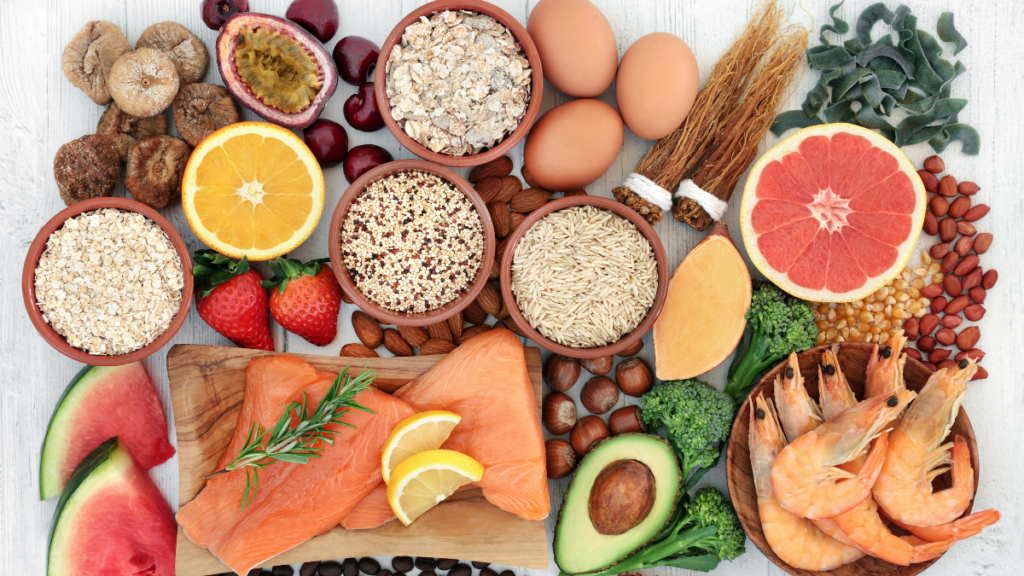
Why is good nutrition important?
Good nutrition prevents malnutrition (where you’re overfed and undernourished), obesity, diabetes, and cancer. It helps maintain a healthy immune system, consistent energy levels, good mood, and general well-being.
In essence, eating the right nutrients makes our bodies feel good and move better. As much as we all love to eat an entire pack of Oreos, if you indulge too often, then you might feel sluggish and unwell. You might have that familiar feeling if you overindulge in fast food and the like. Of course, balance is key and it’s okay to balance nutrient-dense options with less nutrient-dense. Try to avoid labelling foods as healthy or unhealthy and think instead of the nutrients that are right for your body.
If you know you aren’t going to get lots of nutrients during the day, try and up your water intake and take nutritional supplements to ensure you’re meeting your body’s micronutrient needs. Sometimes we have busier days when we can’t plan our optimal menu for the day and it’s more difficult to meet our optimal micro- and macronutrients.

Check out our past vegan recipes
Here are some vegan recipes that we have shared on our blog.
- Vegan treats
- Veganuary (plus stuffed tacos)
- Vegan soup recipes
- Vegan tabbouleh salad recipe
- Vegan jacket potato fillings
These recipes contain many healthy micro-and macronutrients to meet your nutritional needs! Well, maybe except for the treats recipes but who doesn’t love something a little indulgent every now and then? Life is about balance!
Let us know on our social media your favourite nutritionally-packed recipes.
